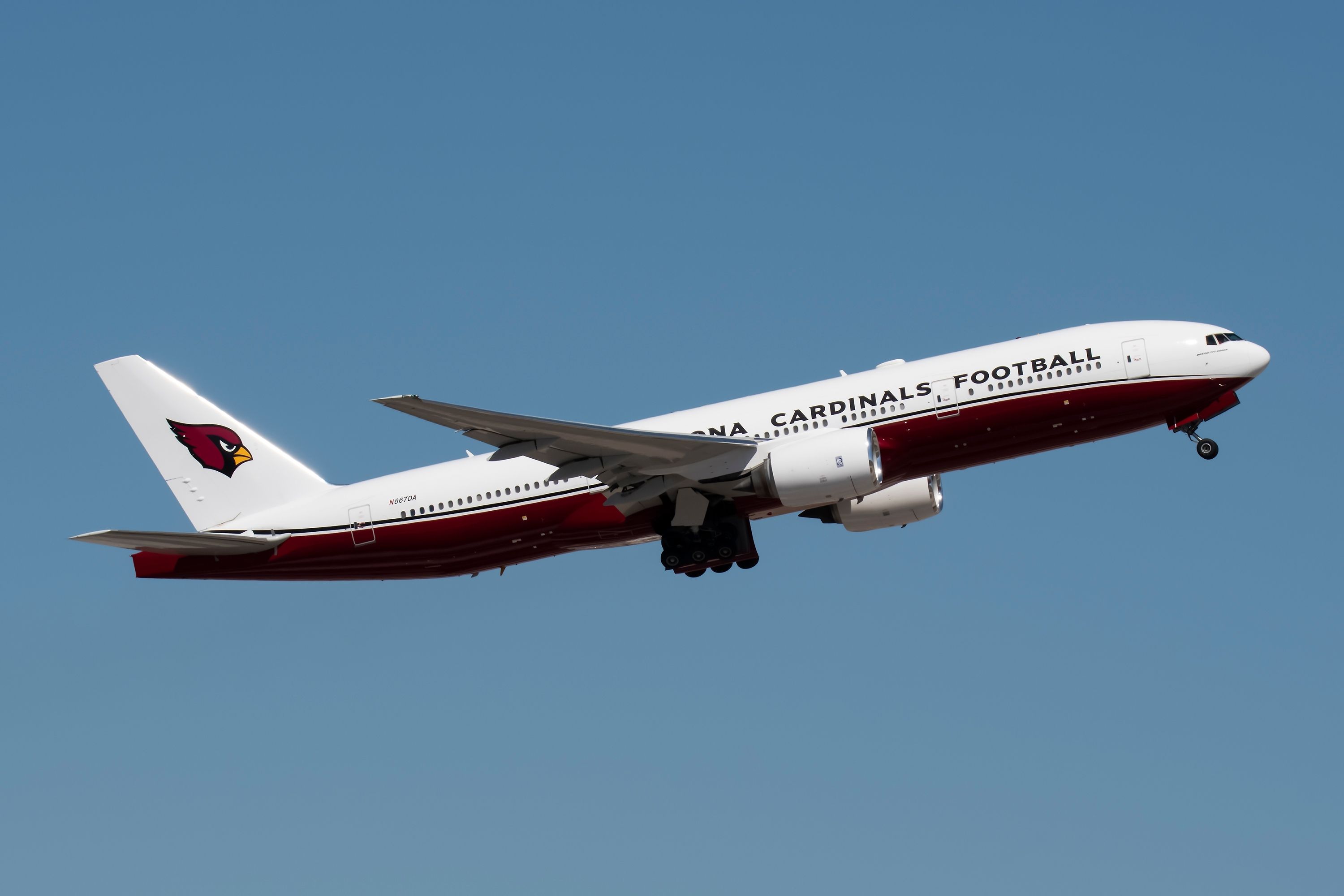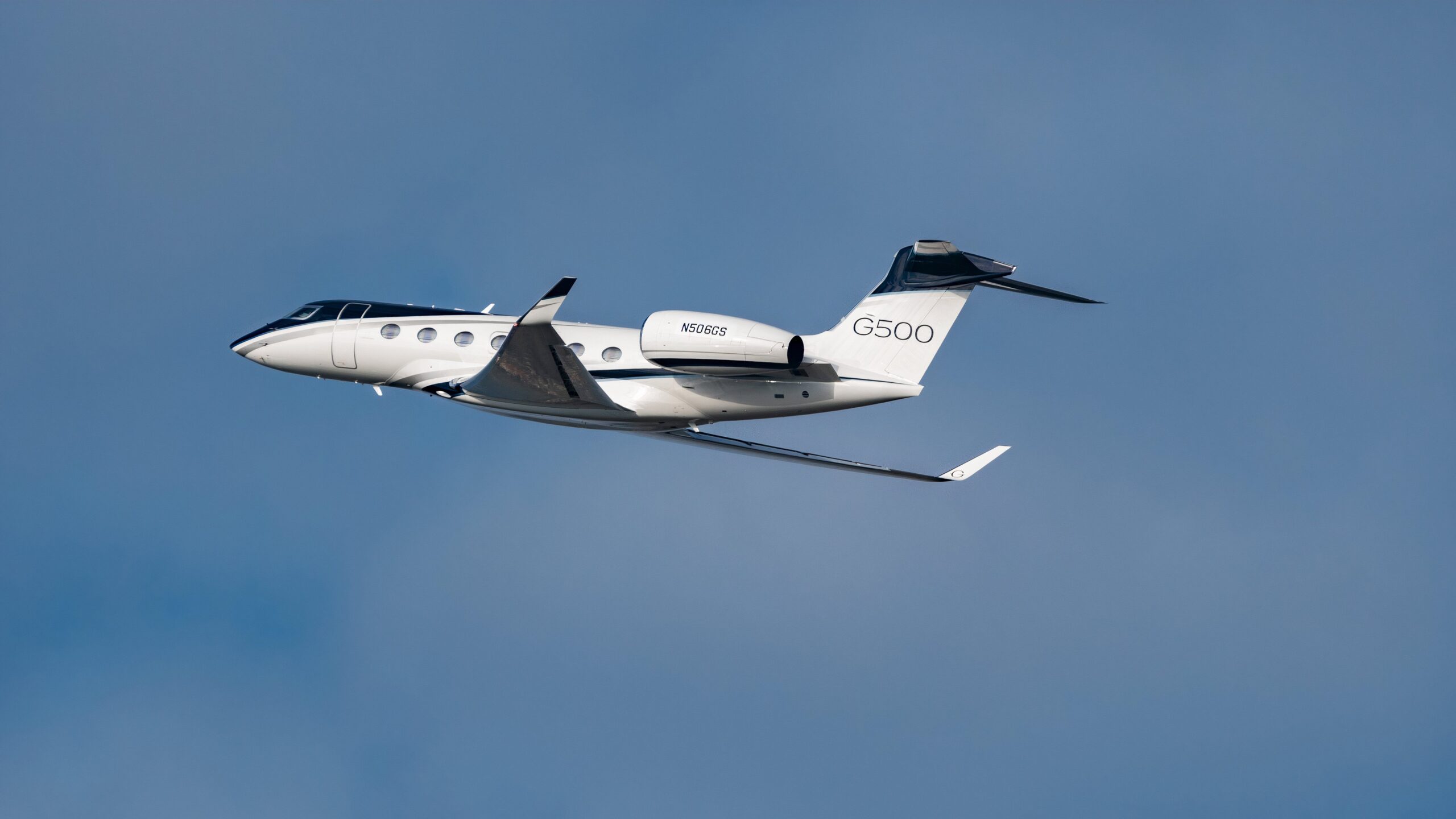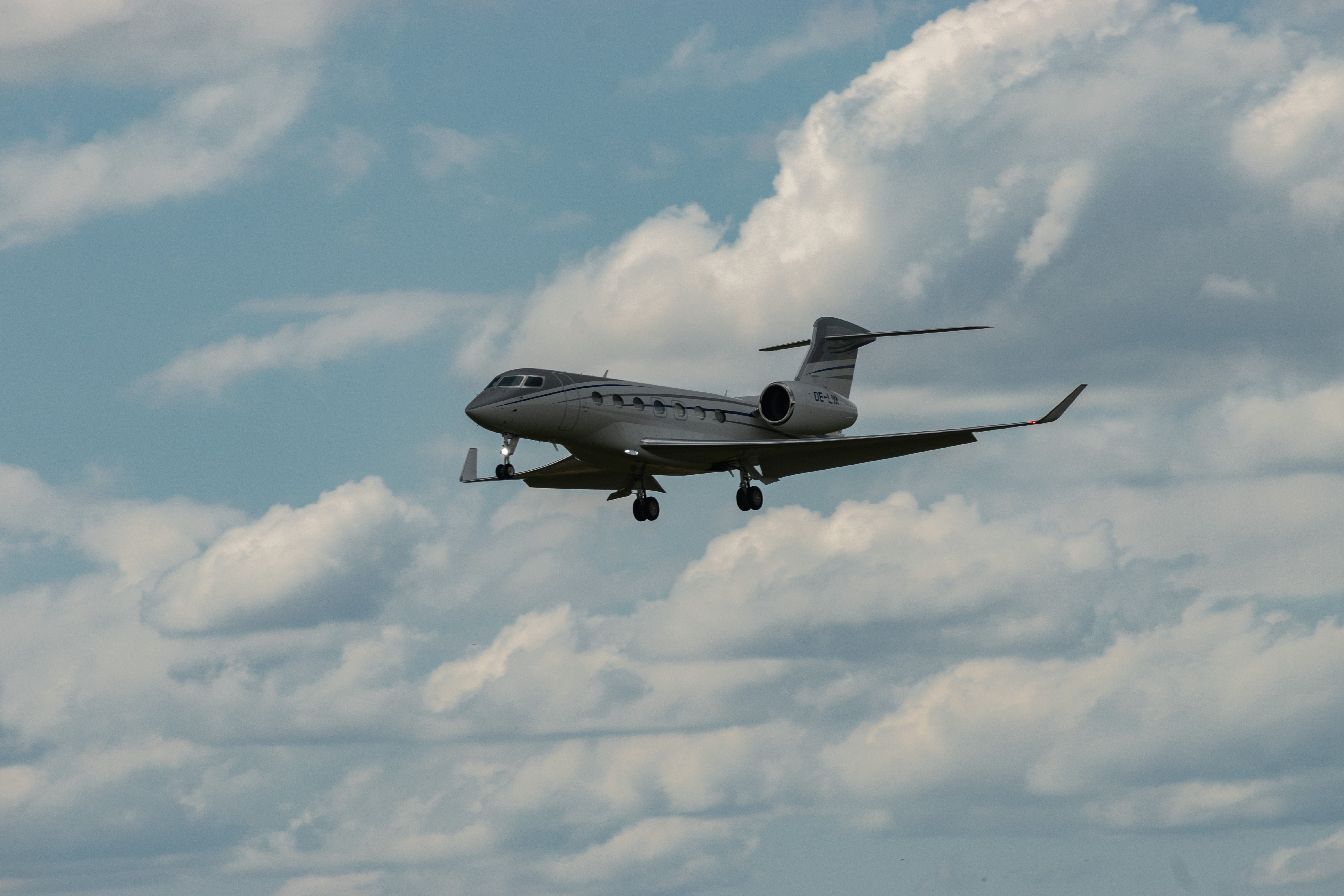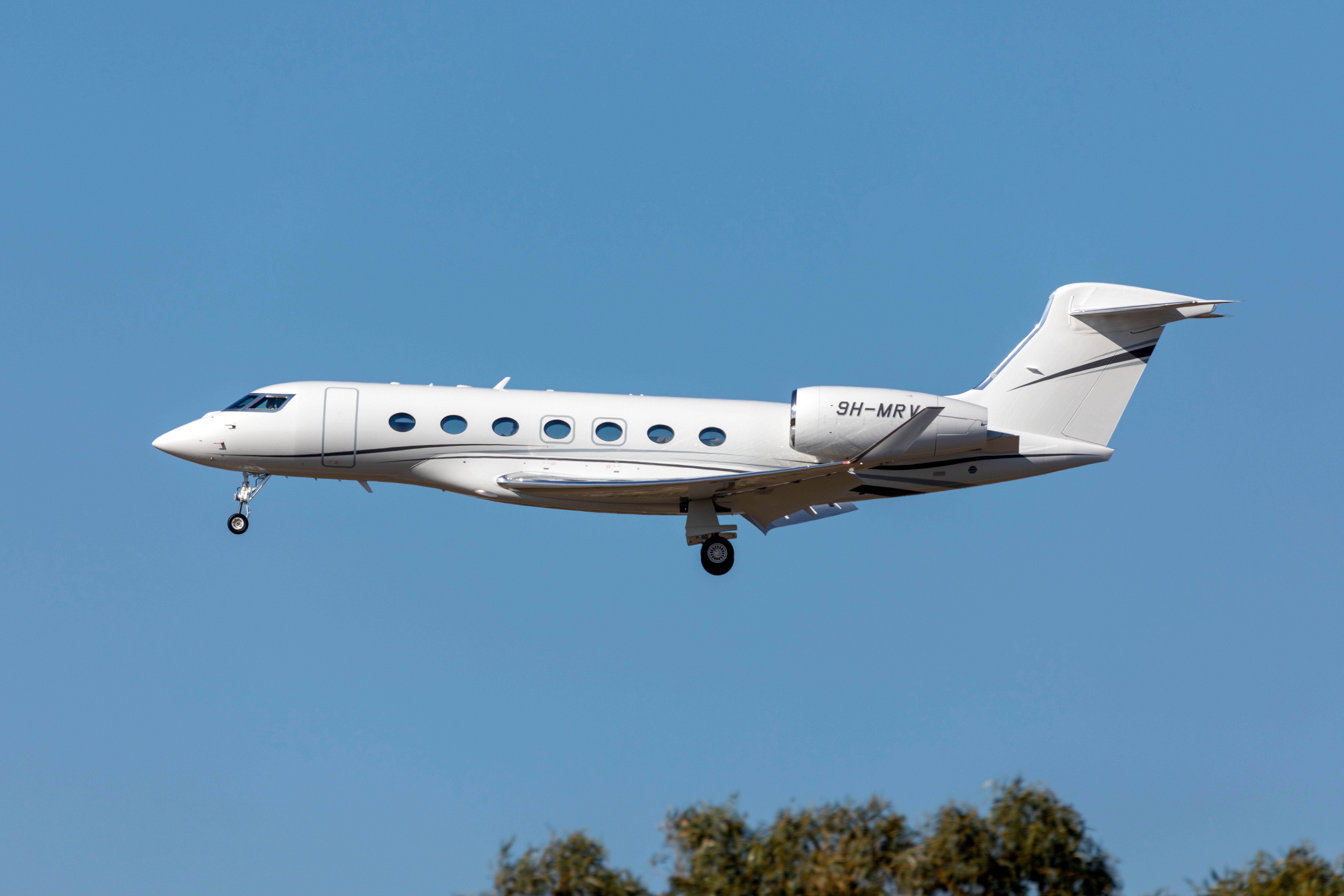Summary
- The New York Giants, one of the oldest NFL teams, have eight NFL championships and four Super Bowl titles. They own a Gulfstream G500 business jet for facilitating operations.
- The Gulfstream G500, built in 2018, has flown 22 flights and accumulated 60 hours of flight time in 2024, resulting in 250 metric tons of carbon emissions.
- The G500 features a new supercritical wing, Pratt & Whitney Canada PW800 engines, and a cabin altitude of 4,850 feet for passenger comfort. Over 125 G500s have been built since 2014.
The New York Giants are one of the most storied teams in the National Football League (NFL). The team was first established in August 1925, nearly 100 years ago, which makes it the longest-running team in the Northeast United States. The team’s rivalry with the Philadelphia Eagles is one of the oldest rivalries in the NFL, which dates back to 1933.
Since it was founded, the team has seen quite a bit of success. The team has eight NFL championship titles, which trails only the Green Bay Packers, which have 13 NFL titles, and the Chicago Bears, which have nine NFL titles. This includes four championships before the Super Bowl was established and four Super Bowl championships in 1986, 1990, 2007, and 2011.
The New York Giants have also accumulated a total of 29 players who were inducted into the NFL Hall of Fame. Beyond this, the team has recorded four Most Valuable Players (MVPs), including:
- Mel Hein
- Frank Gifford
- Y.A. Tittle
- Lawrence Taylor
The team has not been to the Super Bowl since 2011 and has only made the NFL playoffs twice in the past ten years. Although the team has seen recent struggles, the New York Giants are hoping to turn the team around in the near future after a brief rebuilding period. The team will be gearing towards another NFL playoff appearance in the coming years.

Related
How Do NFL Teams Fly?
A look at how professional football players grace the friendly skies in style.
Due to the complexity and difficulty of running an NFL team, many executives and owners have turned to private jets in recent years to help facilitate this complexity. For example, the New England Patriots, Indianapolis Colts, and Arizona Cardinals each own or operate at least one private jet as a team.
The New York Giants currently own a single business jet to help facilitate the many inner workings that happen during the NFL offseason and even during the NFL season itself. Currently, the Giants fly a Gulfstream G500. Let’s take a closer look at the Giants’ business jet and what makes this aircraft so special.
The Giants’ private jet
As previously mentioned, the New York Giants fly a Gulfstream G500. According to JetSpy, this aircraft was built in 2018 and is registered as N5117. Technically, TSTC LLC is the aircraft’s Federal Aviation Administration (FAA) registered owner, although the New York Giants are the sole operator. TSTC LLC is based in New York City, New York.
Photo: Robert Buchel | Shutterstock
Per JetSpy, this aircraft has only flown 22 total flights in 2024 at the time of this writing. The ultra-long-range business jet has accumulated less than 60 hours of total flight time, as well. This is an estimated 26,000 gallons of fuel, which has resulted in over 250 metric tons of carbon emissions, per JetSpy. Additionally, according to JetSpy, the aircraft has visited the following airports the most in 2024:
- Van Nuys Airport (VNY) in Los Angeles, California
- Teterboro Airport (TEB) in Teterboro, New Jersey
- Aspen-Pitkin County Airport (ASE) in Aspen, Colorado
About the Gulfstream G500
Gulfstream first conceptualized the G500 in the early 2010s. It was officially unveiled in October 2014, along with the larger G600, which features a stretched fuselage and cabin. The G500 was meant to replace the slightly outdated Gulfstream G450, which had been in production since 2004. Gulfstream flew the first prototype G500 aircraft in May 2015.
After over 900 total test flights between the five prototype aircraft, the Federal Aviation Administration (FAA) awarded the G500 its type certificate in July 2018.
Photo: InsectWorld | Shutterstock
Shortly after certification, Nordam, the G500’s nacelle vendor, filed for bankruptcy, which delayed many initial deliveries. However, Gulfstream acquired Nordam in October 2018, which ensured the company could still produce nacelles for the G500. Gulfstream was able to deliver the first G500 prior to the Nordam acquisition, and the first plane was delivered in September 2018. Over 125 G500s have been built since 2014.
Performance specifications of the Gulfstream G500
The G500’s fuselage cross-section is slightly smaller than that of the successful G650 that Gulfstream released before. The cabin of the aircraft has the following measurements:
- Cabin length: 41 feet six inches
- Cabin width: seven feet seven inches
- Cabin height: six feet two inches
The G500 has seven windows on each side of the fuselage, and the cabin can fit approximately 19 passengers, depending on the configuration. The cabin can be split into three or four interior zones. To maximize passenger comfort, the G500 also operates at a cabin altitude of only 4,850 feet.
Gulfstream designed a new supercritical wing for the G500. The design of the wing was also based on the shape of the G650’s wing, which has a sweep of 36 degrees. The airframe of the aircraft is mostly made from aluminum alloys, although several features, like the flight controls, are made from composite materials.
Pratt & Whitney Canada PW800 turbofan engines were selected to power the aircraft. This powerful set of engines provides the G500 with over 15,000 pounds of takeoff thrust. It also helps the aircraft achieve the following performance measures:
|
Length |
91 feet two inches |
|---|---|
|
Height |
25 feet six inches |
|
Wingspan |
86 feet four inches |
|
Maximum takeoff weight (MTOW) |
79,600 pounds |
|
Range |
5,300 nautical miles (6,100 miles) |
|
Maximum speed |
Mach 0.925 (611 miles per hour) |
|
Cruise speed |
Mach 0.90 (594 miles per hour) |
|
Service ceiling |
51,000 feet |



